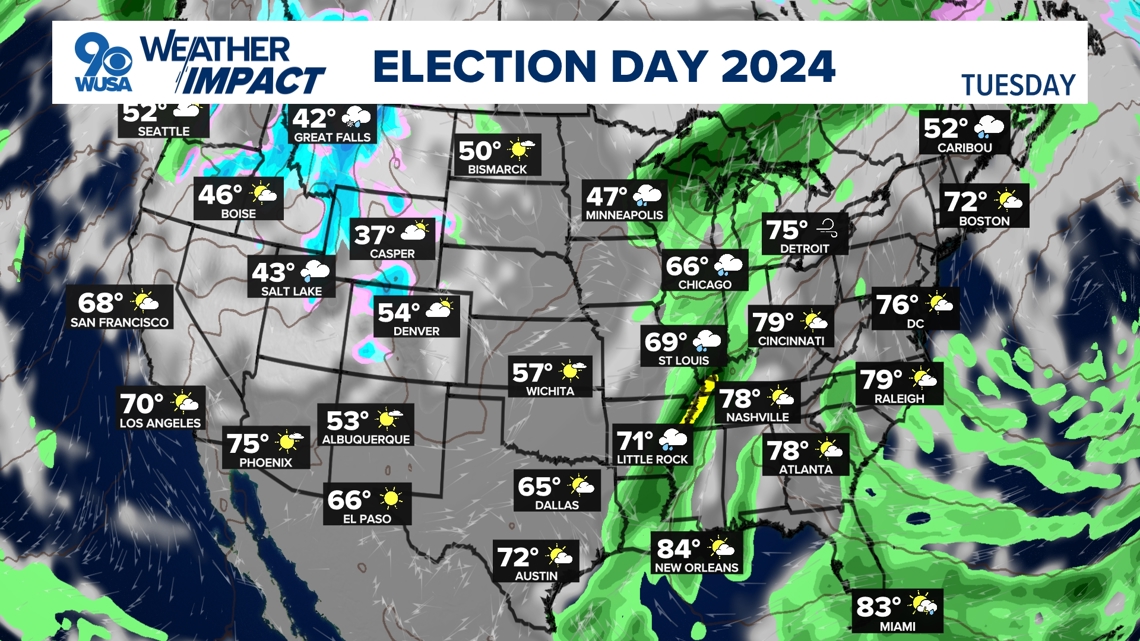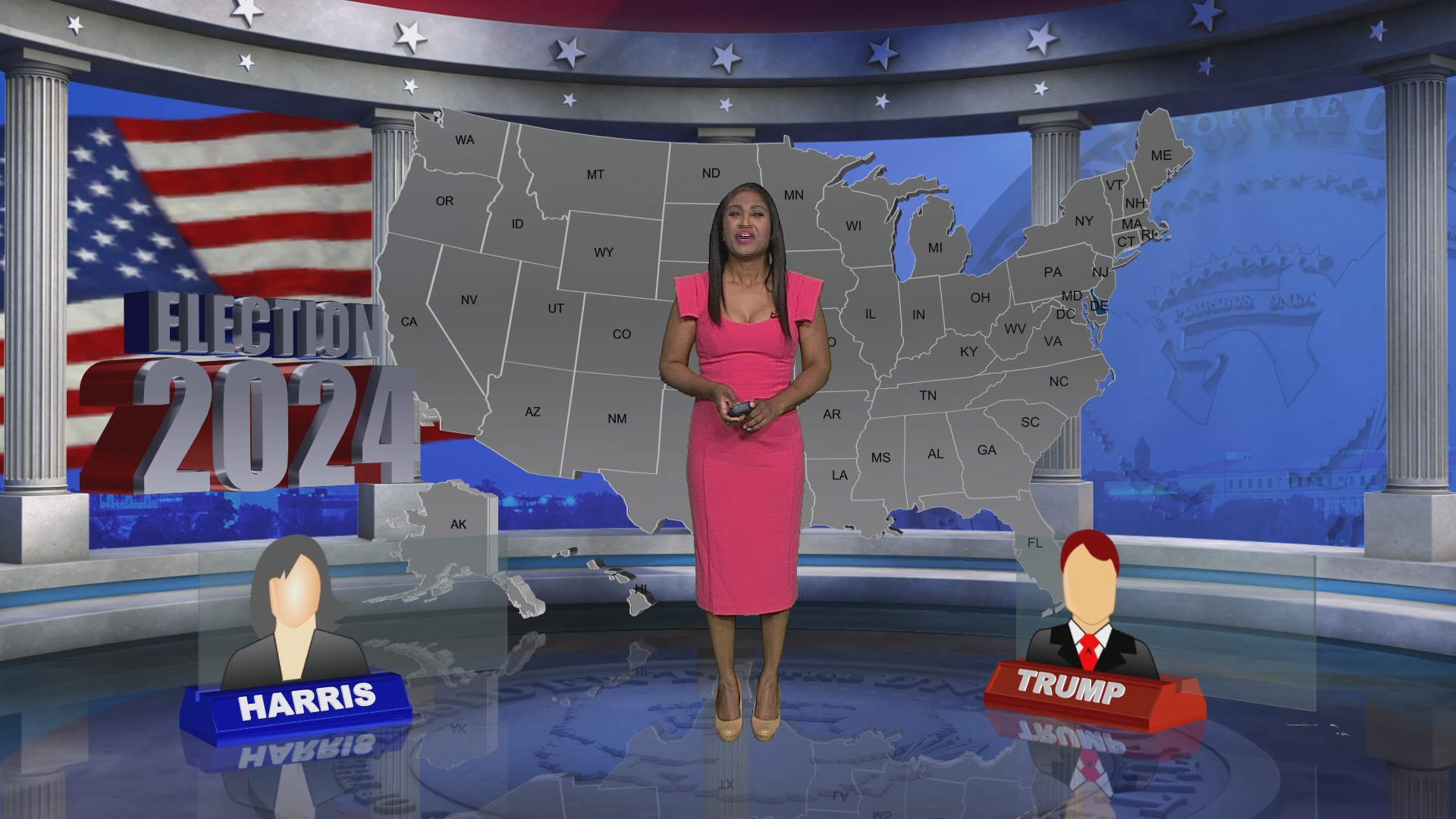WASHINGTON — Taxes, the economy, healthcare are typically the usual topics that drive voters to the polls. But as it turns, the weather on Election Day may also impact who gets put in office.
Rain or shine, research shows that temperatures, along with rain and snow can impact voter turnout, and to some degree, who people vote for.
Temperatures
The warmer it is, the more people vote, an analysis published in the journal Frontiers of Psychology. The research found that warmer temperatures lead to a higher voter turnout.
The authors of the study found that for every 1.8 degree Fahrenheit (1 degree Celsius) increase in temperature, this led to a 0.14 percent increase in voter turnout.
The authors noted that when it is warmer, people typically supported the incumbent candidate. Researchers explained that higher temperatures and good weather made voters more lenient towards the party in power, partially because of the good weather effect.
The authors noted that while 0.14 percent may seem small, in elections it can have big consequences.
"In 1960, the 35th President of the United States, John F. Kennedy, earned 49.72% of the votes whereas the incumbent party’s candidate Richard M. Nixon earned 49.55% of the votes, a difference of only 0.17%. A closer look at the results of this election reveals that Kennedy had a slightly higher share of votes than Nixon in Hawaii (0.06%), Illinois (0.18%), and Missouri (0.52%). If Nixon had won the latter states, he would have become president.," the authors wrote.
"Another example concerns the 2000 presidential election. Based on our model, an increase of only 1°C (1.8°F) may have made Al Gore the 43rd United States President instead of George W. Bush, as Gore would have won in Florida. It is often mentioned that “the heat is on” during presidential campaigns, and our findings indeed clarify that temperature matters when it comes to actual voting," the authors explained.
Rain and Snow
Rain and snow on election days typically lead to lower voter turnout, according to researchers in a study published in the Journal of Politics.
In this study, researchers looked at the effect of weather on voter turnout in 14 U.S. presidential elections. They used GIS interpolations and meteorological data from more than 22,000 weather stations to provide Election Day estimates of rain and snow for each U.S. county. During unpleasant weather, they found that voter turnout decreased and this benefited the Republican party.
"We find that, when compared to normal conditions, rain significantly reduces voter participation by a rate of just less than 1% per inch, while an inch of snowfall decreases turnout by almost 0.5%. Poor weather is also shown to benefit the Republican party's vote share," the authors wrote.
Blame It On The Rain
A study released in 2018 by Dartmouth College found that rain may have led to some voters changing their minds.
The study that was published in American Politics Research examined electoral data and accounted for how voter psychology may impact elections.
“Our study suggests that weather conditions may affect people’s decisions on not only whether to vote but also who they vote for,” said co-author Yusaku Horiuchi, Professor of Government at Dartmouth College.
Their research uncovered that at least 1% of voters in the U.S. who would have voted for a Democrat, instead voted for a Republican on rainy election days.
The study was based on statistical analysis.
Here's what the authors noted about the change in partisan preference:
"The change in party preference may be attributed to a psychological behavior, where voters may be more averse to risk during poor weather conditions. Earlier studies have identified a correlation between ideological and political orientations in which conservatives or Republicans tend to be more averse to risk than liberals or Democrats," study officials wrote.
Early Voting - The Umbrella To Weather Impacts
Early voting could be the political umbrella to obviate the impacts of weather on elections. New research in 2024 shows that early voting may help to dodge some of barriers that weather brings. The paper published in the journal Political Geography showed that in 1996, 11 percent of votes in the presidential election came from mail-in and in-person voting. Researchers noted that in 2016 the number grew to 40 percent and in 2020, 54 percent. The analysis still found that rain can slightly lower voter turnout, but early voting methods lessen the impacts.
"A novel aspect of this paper is documenting the extent to which voters utilize alternate voting methods to avoid rain on election day, and how this use responds to rainfall from the preceding presidential election.," Nick Turner, the paper's author wrote.
Turner said the rainfall in the previous election, increases the probability of voting in the following election.
ELECTION DAY WEATHER
No severe weather is expected across the U.S. on Tuesday. D.C. and most of the East Coast will be rain-free for Election Day with mild temperatures in the 70s. Rain will be possible in areas such as Minneapolis, Chicago, St. Louis, and Little Rock as a cold front moves across the country. Rain and snow could fall in Montana and parts of Utah. Some storms are possible Tuesday in parts of Florida, such a Miami.



